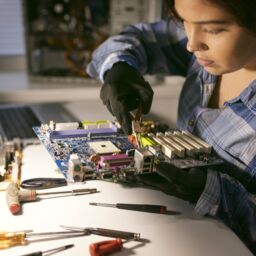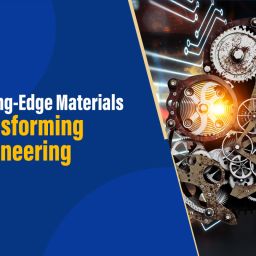
Have you ever heard about powertrain systems? This is one of the crucial topics that engineers learn when it comes to designing vehicles.
The top engineering colleges for mechanical engineering cover these powertrain systems in their syllabus. It highlights how engineers need to design systems that propel the vehicle forward. It is necessary to look after the complete system, which includes the engine, motor, and internal elements from energy storage systems to transmission.
This blog provides insights into how to design powertrain systems and clear steps on how to maximise efficiency and power density.
Importance of powertrain systems:
When someone discusses a high-performance sports sedan, you frequently hear about its outstanding body control, seamless acceleration, seamless braking, and upgraded safety features.
These methods are useful, but they are not the “be-all and end-all” of what makes a sports vehicle successful. Its incredible performance figures, which include 0-100 km/h in under a second and hundreds of horsepower, originate only from your powertrain.
A high-quality powertrain is essential for improved operating range, acceleration, and top speed as a source of power generation. Thus, the next time you feel your car accelerate from a standstill and gain speed, keep in mind that it was driven by its motor.
The Powertrain Control Module (PCM) is known for its ability to reduce emissions generated from the engine and enhance fuel efficiency as per international environmental regulations.
What are the primary elements of powertrain systems?
The powertrain system’s main component is the engine, which generates power from the consumption of fuel and converts it into mechanical energy. Transmission systems transfer power from the engine to the wheels. The several gears control both torque and speed.
This system, which consists of components that include axles, differentials, and driveshafts, transmits power from the transmission to the wheels. In a powertrain, exhaust systems are responsible for the exhaustion of gasses from the engine. However, it generates electricity because of the mufflers and catalytic converters.
What should engineers know?
The process of designing a powertrain is challenging and intricate because it requires integrating various parts and systems to produce a reliable and effective source of electricity for automobiles. Here are some of the challenges you need to know about:
- One of the main challenges in powertrain design is complying with high emissions demands and environmental regulations. It’s difficult to reduce harmful pollutants like carbon dioxide and maintain efficiency and effectiveness.
- Maintaining fuel efficiency and performance when designing powertrain systems is a complex task. Fuel economy is necessary to lower operating costs and has a great impact on the environment.
- The integration of electric engines, batteries, and other parts is challenging because of the expansion of electric and hybrid vehicles, which requires specific design skills.
- Coordination between the engine, gearbox, exhaust system, and drive line is necessary to ensure efficient power transfer and reduce friction losses.
- The use of innovative materials and manufacturing methods, like lightweight metals and additive manufacturing, has the potential to pose operational and financial challenges.
- It is difficult to control the cost as there is a need for materials and components. The cost of powertrain components is affected by the fluctuations in supply costs.
The Future of the Electric Vehicle Revolution:
The automotive industry is moving into sustainable and eco-friendly transportation solutions to create a greener future. The future scope of mechanical engineers in the electric vehicle industry is vast and promising. This transition from internal combustion engines to powertrains has created a demand for skilled professionals who can design, optimise, and work on electric vehicles.
Designing powertrain systems with higher efficiency, better thermal management, and optimised power density are the challenges for engineers. With the better use of semiconductors, the goal of designing flexible powertrains can be achieved.
However, engineers are required to focus on the future, where the evolution of electric vehicles, the contribution of powertrain systems where there are no internal combustion engines and EVs run on fuelled batteries, The advancements in the automotive industry require engineers to face the challenges of designing powertrain systems within the compiled regulations and contribute to an efficient transportation future.
The best mechanical colleges in Coimbatore let you learn these essential concepts when it comes to the automobile industry. In creating sustainable transportation, powertrain system optimization can achieve higher efficiency, reduced emissions, and better performance.















